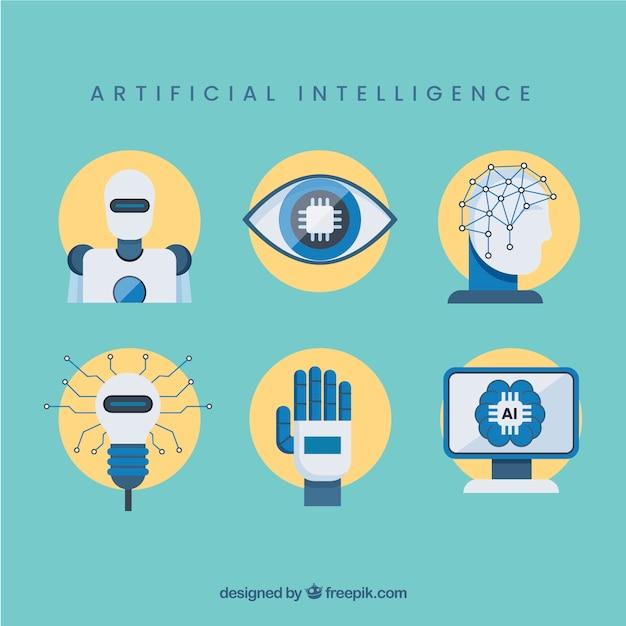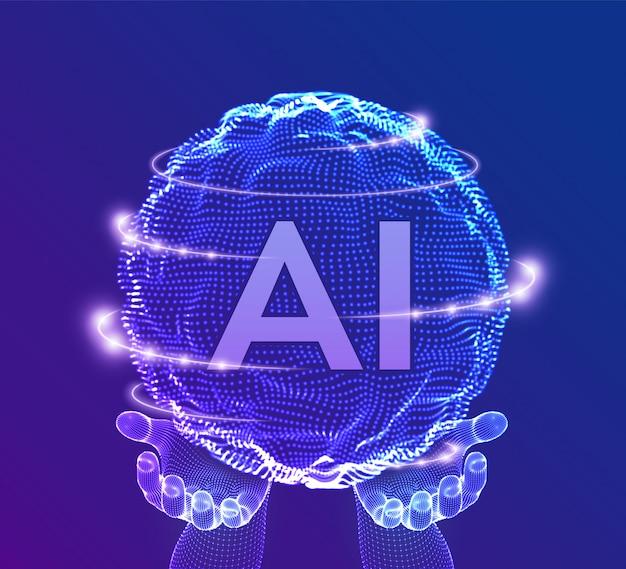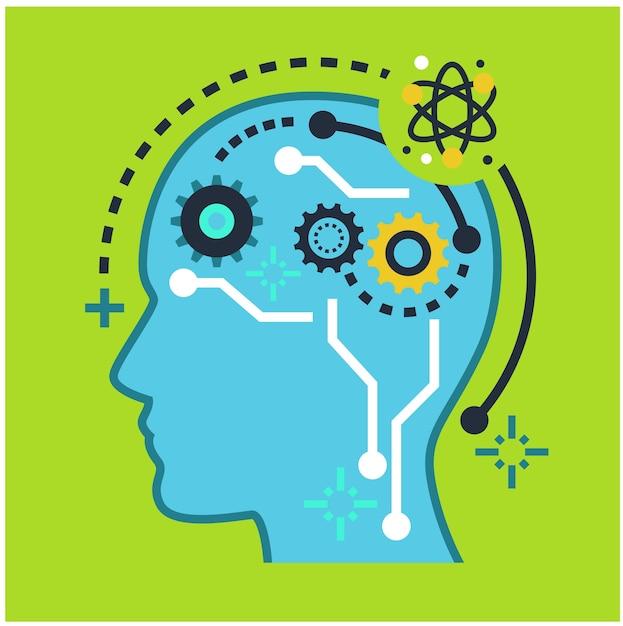In today’s world, machines are becoming increasingly intelligent, which has made our lives more comfortable and efficient. Among the many technologies driving this transition, machine learning algorithms and artificial intelligence (AI) stand out as the most significant. Before we dive in and explore the world of machine learning, you might wonder, what is machine learning in AI?
Machine learning is a subset of AI. It allows machines to learn from data, patterns, and experiences, rather than being explicitly programmed by humans to perform specific tasks. Unlike traditional coding, machine learning enables computers to identify patterns and predict outcomes by analyzing large amounts of data.
Deep learning, a subset of machine learning, enables a system to learn and make decisions on its own by simulating the human brain’s neural network. The combination of artificial intelligence, machine learning, and deep neural networks has resulted in unprecedented growth in the capabilities and intelligence of machines.
So, how does machine learning work? Machine learning algorithms use input data, such as images, text, or speech, to create mathematical models. These models analyze and recognize patterns in the data, identifying trends and predicting outputs.
Whether you’re an AI enthusiast or merely curious, it’s essential to understand the fundamentals of these increasingly vital technologies. This guide will provide an overview of artificial intelligence and machine learning, with a particular focus on inteligencia artificial e machine learning. So, let’s explore the world of artificial intelligence and machine learning!
Machine Learning Algorithms
Machine learning algorithms are the backbone of modern artificial intelligence. These algorithms enable machines to learn from vast amounts of data and improve their performance without being explicitly programmed. Here are some popular machine learning algorithms you should know:
Linear Regression
Linear regression is a simple algorithm that can be used to predict numerical values. It works by fitting a line to a set of data points that have a linear relationship. Linear regression is widely used in financial analysis, marketing research, and social sciences.
Logistic Regression
LogisticRegression is another algorithm that is used to predict binary outcomes. It’s widely used in the healthcare industry to predict whether a patient has a particular disease or not. Logistic regression models the probability of the outcome using a logistic function.
Random Forest
Random Forest is a supervised learning algorithm that can be used for classification and regression tasks. It works by creating a multitude of decision trees at training time and outputting the class that is the mode of the classes (classification) or mean prediction (regression) of the individual trees.
K-Means
K-Means is an unsupervised learning algorithm that is used to group similar data points together. It works by partitioning a set of data points into k clusters based on their similarity. K-Means clustering is widely used in image segmentation, market segmentation, and anomaly detection.
Naive Bayes
Naive Bayes is a probabilistic algorithm that is widely used for text classification and spam filtering. It works by assuming that the presence of a particular feature in a class is independent of the presence of other features.
Support Vector Machines (SVMs)
SVMs are a supervised learning algorithm that can be used for classification, regression, and anomaly detection tasks. They work by finding the hyperplane that maximally separates the classes. SVMs are widely used in image classification, natural language processing, and bioinformatics.
Machine learning algorithms are the bedrock of modern artificial intelligence. With these algorithms, machines can learn from vast amounts of data and improve their performance without being explicitly programmed. From simple linear regression to complex support vector machines, there’s a machine learning algorithm for every task. So, why not give them a try and see how they can help you to solve real-world problems?
How Does Machine Learning Work
Machine learning is a subfield of artificial intelligence that involves teaching machines to learn from data automatically. Here’s a closer look at how machine learning works:
Data Collection
The first step in machine learning is to collect relevant data. This could involve gathering data from various sources, such as sensors, social media feeds, or online databases.
Data Cleansing
Raw data is often noisy and contains errors, so the next step is to clean and preprocess the data to remove any unnecessary or corrupted information.
Feature Selection
Machine learning algorithms process data in the form of features or attributes. Feature selection involves identifying relevant features to feed into the algorithm.
Model Selection
Choosing the right machine learning model depends on the type of problem you’re trying to solve and the type of data you’re working with. Some popular models include linear regression, decision trees, and neural networks.
Training the Model
Once the model is selected, it needs to be trained. During the training process, the algorithm is presented with the dataset and adjusts its parameters to minimize error and improve accuracy.
Testing and Validation
After the model is trained, it needs to be tested and validated on a new dataset to ensure its accuracy. This helps identify problems and optimize the algorithm.
Deployment
Once the model is validated, it’s ready to be deployed and used in real-world scenarios to make predictions and generate insights.
In conclusion, machine learning is a complex process that involves collecting, cleansing, selecting, training, testing, and deploying models. By continuously improving its algorithms, machine learning has the potential to improve decision-making and optimize various processes across industries.
What is Machine Learning in AI
Machine learning is a subset of artificial intelligence that focuses on algorithms that enable machines to learn from data and make predictions or decisions without being explicitly programmed. Here are some key points to help you understand what machine learning is all about:
- At the heart of machine learning is the concept of a training set, which is a collection of data used to teach a machine learning algorithm.
- The training set consists of input data and output data, where the input data is the data that is fed into the algorithm, and the output data is the desired result or response.
- Machine learning algorithms use the training set to learn patterns and relationships in the data and develop a model that can make predictions or decisions.
- There are various types of machine learning algorithms, including supervised learning, unsupervised learning, and reinforcement learning.
Supervised Learning
Supervised learning is a type of machine learning where the algorithm learns from a labeled dataset, which means that the desired output is already known. Here are some examples of applications of supervised learning:
- Image classification: Given a set of labeled images, the algorithm can learn to classify new images into their respective categories.
- Credit risk assessment: Given a dataset of customers and their credit scores, the algorithm can learn to predict the likelihood of a customer defaulting on a loan.
Unsupervised Learning
Unsupervised learning is a type of machine learning where the algorithm learns from an unlabeled dataset, where the desired output is unknown. Here are some examples of applications of unsupervised learning:
- Clustering: Given a dataset of customers, the algorithm can learn to group them into different segments based on their similar characteristics.
- Anomaly detection: Given a dataset of network traffic, the algorithm can learn to identify unusual patterns or behaviors.
Reinforcement Learning
Reinforcement learning is a type of machine learning where the algorithm learns through trial and error. Here are some examples of applications of reinforcement learning:
- Game playing: Given a set of rules and possible moves, the algorithm can learn to play a game and optimize its strategy over time.
- Robotics: Given a task to accomplish, the algorithm can learn to manipulate its environment and achieve the goal through trial and error.
In summary, machine learning is a powerful tool that has many practical applications in various fields. By training algorithms to learn from data, we can improve our ability to make predictions, automate repetitive tasks, and even create new solutions to complex problems.
Introdução à Inteligência Artificial e Machine Learning
A inteligência artificial (IA) e o machine learning (ML) são dois termos estreitamente relacionados que vêm ganhando destaque em todos os setores da economia, seja na indústria, no comércio, na saúde e até mesmo no entretenimento. É uma tecnologia empolgante que promete revolucionar o tipo de trabalho que fazemos.
Mas, o que exatamente significam esses termos e como eles funcionam em conjunto? Nesta seção, vamos explorar as principais características e diferenças entre inteligência artificial e machine learning.
Inteligência Artificial e sua história
-
A IA é um campo amplo que envolve o estudo de como as máquinas podem ser programadas para realizar tarefas cognitivas semelhantes às de seres humanos.
-
Ela tem uma história que remonta a décadas atrás. O teste de Turing, por exemplo, foi a primeira tentativa formal de se pensar sobre o que a inteligência realmente significa. Isso foi em 1950.
-
De lá pra cá, muitos avanços importantes foram feitos no campo da IA. A mais notável e desafiadora, sem dúvida, é construir máquinas ou sistemas que são capazes de aprender e evoluir por conta própria.
Machine Learning
-
O ML é uma subcategoria de IA que permite que as máquinas aprendam a partir de dados. Em outras palavras, elas podem ser programadas para entender padrões em grandes conjuntos de dados e ajustar suas ações ou respostas de acordo com esses padrões.
-
O objetivo final do aprendizado de máquina é:
- Que as máquinas aprendam e evoluam por conta própria, sem a necessidade da intervenção humana.
- Que as máquinas se tornem cada vez mais precisas e eficientes em suas tarefas.
-
Existem algumas técnicas principais de aprendizado de máquina:
-
Aprendizado supervisionado – o sistema é alimentado com os dados de entrada e saída desejados. Ele usa isso como um treinamento para tentar adivinhar novos casos.
-
Aprendizado não supervisionado – o sistema tenta encontrar padrões ou insights nos dados que não foram rotulados de antemão.
-
Aprendizado por reforço – o sistema é recompensado ou punido de acordo com sua ação, e o objetivo é fazer com que a máquina aprenda qual ação maximiza as recompensas e minimiza as punições.
-
Como IA e ML estão sendo usados atualmente
-
A IA e o ML estão sendo usados em muitas indústrias diferentes. Alguns exemplos de como eles estão sendo usados incluem:
-
Em marketing – para análise de dados, preparação de relatórios, inteligência de negócios, segmentação de público-alvo etc.
-
Na saúde – para diagnósticos precisos, prevenção de doenças, descoberta de novos tratamentos e medicamentos etc.
-
Na tecnologia da informação – para segurança da informação, detecção de fraudes, reconhecimento de imagens, reconhecimento de fala, processamento de linguagem natural e muitas outras aplicações.
-
Na indústria – para otimização de processos de produção, controle de qualidade, previsão de demanda e muitas outras aplicações.
-
Conclusão
Nesta seção, foi possível explorar as principais características e diferenças entre inteligência artificial e machine learning, bem como exemplos de como eles estão sendo usados em vários setores da economia. À medida que a tecnologia continua a avançar, é emocionante pensar nas possibilidades para o futuro. Com a IA e o ML, as máquinas serão capazes de aprender e se adaptar pelos seus próprios meios, criando novas oportunidades para o trabalho humano e capacidades que ainda nem podemos imaginar.
Is Artificial Intelligence the Same as Machine Learning
Artificial intelligence and machine learning are two phrases that are often used interchangeably. However, though related, they are not the same.
Understanding Artificial Intelligence
Artificial intelligence refers to a branch of computer science that deals with building systems capable of carrying out tasks that would typically require human intelligence. These tasks include things like reasoning, problem-solving, decision-making, and recognizing speech and images.
Understanding Machine Learning
Machine learning, on the other hand, is a subset of artificial intelligence. It involves training computer systems to learn and adapt based on data without being explicitly programmed to do so. Machine learning algorithms utilize statistical models to recognize patterns and make predictions based on data.
The Relationship Between Artificial Intelligence and Machine Learning
While machine learning is a subset of artificial intelligence, not all artificial intelligence systems are based on machine learning. It is possible to create an artificial intelligence system that doesn’t use machine learning but relies on hard-coded rules for decision-making. Moreover, though machine learning is currently one of the most dominant approaches to building artificial intelligence systems, other methods exist, such as expert systems and evolutionary computation.
Key Takeaways
- Artificial intelligence and machine learning are distinct terms, although related.
- Machine learning is a subset of artificial intelligence that relies on data to make decisions.
- Not all artificial intelligence systems use machine learning. Other approaches to building artificial intelligence systems exist.
- To understand artificial intelligence or machine learning, it is essential first to understand the terms and how they differ.
In conclusion, understanding how artificial intelligence and machine learning differ is crucial in developing and implementing modern technologies. They both have various applications, but the path to creating a modern and successful application in AI begins with grasping the subtle differences between its subsets.
Inteligencia Artificial, Machine Learning y Deep Learning
La Inteligencia Artificial (IA) es una rama de la informática que busca crear sistemas inteligentes capaces de realizar tareas que, hasta ahora, solo los humanos podían llevar a cabo. Dentro de la IA, existen subcategorías, que se enfocan en diferentes enfoques para desarrollar la tecnología. Entre ellas se encuentran Machine Learning y Deep Learning.
Machine Learning
Machine Learning es una rama de la IA que se enfoca en el desarrollo de algoritmos y técnicas que permiten a las máquinas aprender de los datos a su disposición. En lugar de programar explícitamente una tarea, las máquinas aprenden por sí solas al analizar grandes conjuntos de datos.
A diferencia de la programación tradicional, el Machine Learning no se basa en reglas explícitas y definidas de antemano. En cambio, se trata de encontrar patrones y relaciones en los datos de entrada para hacer predicciones o tomar decisiones.
El Machine Learning se utiliza en una amplia variedad de aplicaciones, como la detección de fraudes, la clasificación de imágenes, la comprensión del lenguaje natural, la recomendación de productos y servicios, y el análisis de datos financieros.
Deep Learning
El Deep Learning es una rama del Machine Learning que utiliza redes neuronales artificiales. Estas redes están compuestas por múltiples capas, lo que las hace capaces de realizar tareas más complejas y sofisticadas.
El Deep Learning ha sido muy exitoso en el campo del reconocimiento de imágenes y del procesamiento del lenguaje natural. Esta rama del Machine Learning se ha utilizado en la creación de sistemas de traducción automática y en sistemas capaces de generar texto a partir de imágenes.
El Deep Learning también se aplica en el ámbito de la autonomía de los vehículos, ya que las redes neuronales profundas pueden tomar decisiones complejas en tiempo real.
Conclusión
En resumen, la Inteligencia Artificial, el Machine Learning y el Deep Learning son tecnologías que están transformando la forma en que se realizan las tareas cotidianas y cómo las empresas llevan a cabo sus operaciones.
El Machine Learning y el Deep Learning han permitido el desarrollo de nuevas aplicaciones, el análisis de grandes conjuntos de datos, la automatización de tareas y la toma de decisiones más informadas.
La Inteligencia Artificial no solo ofrece la oportunidad de mejorar la eficiencia y la productividad, sino que también puede aumentar la calidad de vida y resolver muchos de los problemas más complejos que enfrenta nuestra sociedad.


